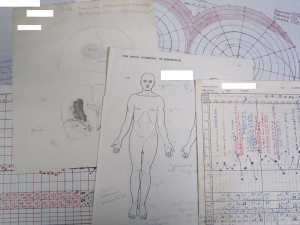This week the Centre for Research Collections is running its very first Summer School to provide an overview of different aspects of the heritage sector; with a focus on collections, exhibitions and engagement. We are participating in the Summer school ourselves, and will be taking over the CRC’s social media – so make sure to check out our Facebook and Twitter takeover.
Collections is running its very first Summer School to provide an overview of different aspects of the heritage sector; with a focus on collections, exhibitions and engagement. We are participating in the Summer school ourselves, and will be taking over the CRC’s social media – so make sure to check out our Facebook and Twitter takeover.
The programme offers its participants hands on experience from a variety of professionals. Staff ranging from an Academic Support Librarian who showed us how much interaction and support the library provides to its users, to Rachel Hosker – the Archive Manager, who presented a powerful case for the relevance of archival material as a ‘memory of society’ as well as highlighting the challenges of managing a collection. Possibly one of the most interesting sections of her presentation was the range of material in the collections: from manuscripts and letters, to drawings and records it was clear that archives contain a broad range of fascinating material which we were lucky enough to handle.
A fascinating afternoon session included an introduction to the Lothian Health Services Archive, which allowed us to engage with some of their many records and gain a greater understanding of the volume and range of records that they held. Using records such as these we were able to trace the lives of individuals, giving us a window into the everyday work of LHSA.
The day left us reflecting on the extent of the collaboration required between departments and individuals, and we look forward to furthering this understanding throughout the week.





